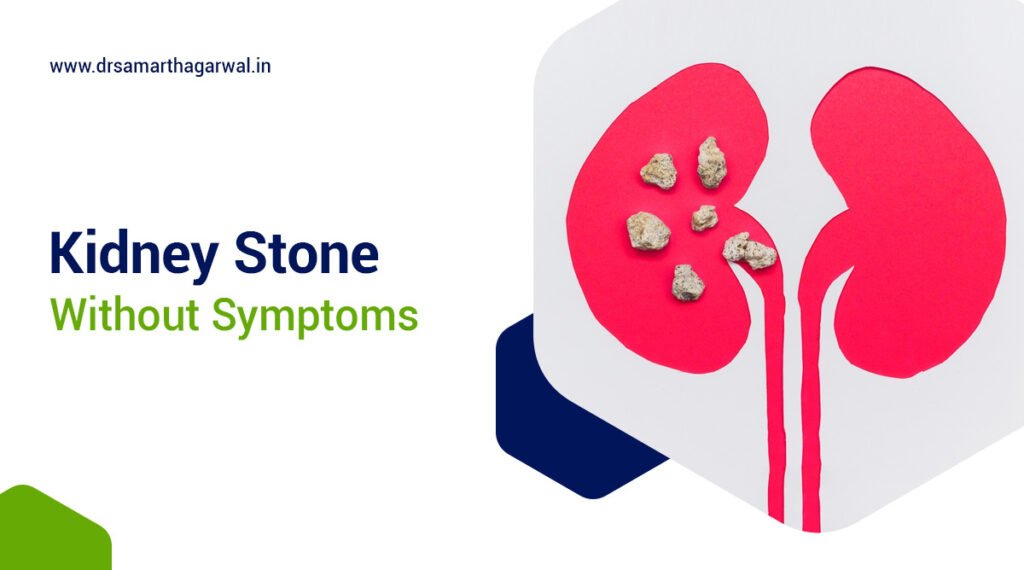Ureteroscopic stone removal is a common procedure used to treat kidney stones that can cause significant discomfort and complications if left untreated.
While this minimally invasive technique is often effective, it is essential for patients to understand the potential side effects that may arise during and after the procedure.
This article explores what ureteroscopic stone removal entails, how the procedure is performed, and the various side effects patients might experience.
It discusses practical strategies for managing or preventing these side effects, ensuring a smoother recovery.
Whether facing this procedure or seeking more information, you will find valuable insights to guide you through the process.
What is Ureteroscopic Stone Removal?
Ureteroscopic stone removal, commonly known as ureteroscopy, is a minimally invasive surgical procedure employed by urologists to diagnose and treat kidney stones that obstruct the urinary tract. This procedure involves the use of a thin flexible instrument called a ureteroscope, which is inserted through the urethra and bladder to directly visualize and remove stones located in the ureter or kidneys. It allows for real-time imaging and effective stone removal without the need for larger incisions, making it a preferred option for many patients dealing with obstructive uropathy.
How is the Procedure Performed?
The ureteroscopy procedure is performed in a medical center under general anesthesia or sedation, depending on the patient’s condition and the complexity of the case, ensuring minimal discomfort during the operation.
What Are the Side Effects of Ureteroscopic Stone Removal?
Ureteroscopic stone removal, a minimally invasive procedure, is generally safe and effective for treating kidney stones, but potential complications may arise, including bleeding, ureteral perforation, and infection.
According to Selmi, Volkan et al.’s 2021 study ‘Effect of Endoscopic Ureteral Stone Treatment on Kidney Function’, ureteroscopic stone removal, also known as ureteroscopy (URS), can lead to various complications. These complications can include bleeding, ureteral perforation, and infection.
Pain and Discomfort
After ureteroscopic stone removal, patients may experience varying degrees of pain and discomfort, particularly in the lower abdomen and urinary tract, often necessitating effective pain management strategies.
According to Ahn, Sun Tae et al.’s (2012) study “Acute Postoperative Pain after Ureteroscopic Removal of Stone: Incidence and Risk Factors”, the study involved 135 patients who underwent Ureteroscopic Stone Removal (URS) and analyzed the incidence of acute postoperative pain based on a visual analog pain scale (VAS) score greater than 4.
Following the procedure, it is common for patients to feel a sense of discomfort due to inflammation and irritation within the urinary system. Factors such as surgical trauma, the presence of a stent, and manipulation of the ureter can contribute to these sensations. Symptoms may manifest as:
- Sharp or dull pain in the lower abdomen
- Burning sensations during urination
- Frequent urges to urinate
To alleviate these symptoms, a combination of treatments is often recommended. Healthcare professionals typically suggest:
- Painkillers for immediate relief, which may include NSAIDs or stronger opioids
- Muscle relaxants to ease discomfort
- Physical therapy exercises to promote healing and flexibility
It’s essential for patients to communicate openly with their healthcare providers about their pain levels to tailor an effective recovery plan.
Bleeding
Bleeding is a potential side effect of ureteroscopic stone removal, which can occur as a result of injury to the ureter or surrounding tissues during the procedure, and may present as urinary bleeding.
In most cases, this bleeding is temporary and resolves on its own. It can be concerning for both patients and healthcare providers, particularly if it becomes excessive or lasts longer than expected. There are several factors that might increase the likelihood of bleeding, including:
- Pre-existing medical conditions affecting blood clotting, such as hemophilia or liver disease
- Use of anticoagulant medications, which can complicate clotting mechanisms
- The size and location of the stone being removed, which may result in increased trauma to the tissues
If bleeding persists beyond a few hours or is accompanied by significant pain, fever, or other unusual symptoms, it is crucial for patients to seek medical attention promptly. Monitoring and evaluating any ongoing bleeding is essential to ensure proper healing and avoid further complications.
Infection
Post-operative urinary tract infections (UTIs) are a common risk following ureteroscopic stone removal due to the introduction of instruments into the urinary tract and can lead to various urinary symptoms if not promptly addressed.
According to Wason, Shaun E. et al.’s (2024) “Ureteroscopy” chapter from StatPearls, ureteroscopy can cause complications such as ureteral perforation, bleeding, and urinary tract infection.
Patients may notice several warning signs that can indicate the presence of a UTI, including:
- Painful urination
- Increased frequency or urgency of urination
- Cloudy or foul-smelling urine
- Lower abdominal pain or discomfort
- Fever or chills in more severe cases
If these symptoms arise after the procedure, it’s critical for individuals to reach out to a healthcare provider promptly. Healthcare professionals typically recommend urine tests to identify the presence of bacteria or other indicators of infection.
Early diagnosis is vital, as it enables the administration of appropriate antibiotic treatment to prevent further complications and promote recovery.
Urinary Tract Injuries
In rare instances, ureteroscopic stone removal can result in urinary tract injuries, including ureter injury, which may lead to longer-term complications and necessitate additional surgical interventions.
Such injuries can occur due to factors like improper technique during the procedure or anatomical anomalies that make the urinary tract more susceptible. Individuals who experience urinary tract injuries might notice symptoms such as persistent pain in the lower abdomen, difficulty urinating, or even blood in the urine. If left untreated, these conditions can escalate, leading to infections or other serious complications.
- Patients exhibiting these signs should seek medical attention promptly.
- Treatment may involve imaging studies to evaluate the extent of the damage, followed by conservative management or surgical correction if necessary.
In some cases, specialized urological care may be required to ensure proper recovery and mitigate the risks of future complications.
Ureteral Strictures
Ureteral strictures are a potential complication following ureteroscopic stone removal, where scarring or narrowing of the ureter may develop, possibly leading to urinary problems and obstructive uropathy.
These strictures can arise from several factors, including inflammatory processes, surgical trauma, or even congenital anomalies. When these blockages occur, the outcome can vary dramatically, often resulting in debilitating symptoms or hazardous complications if left untreated.
Individuals suffering from ureteral strictures may experience symptoms such as:
- Persistent flank pain
- Blood in the urine
- Frequent urinary tract infections
- A reduction in urine output
Diagnosis typically involves imaging studies and urinary tests. Treatment options range from minimally invasive procedures like balloon dilation or stent placement to more complex surgical interventions such as ureteral resection and reconstruction. It’s crucial to address these issues timely to prevent irreversible kidney damage and safeguard overall renal function.
Kidney Injury
Kidney injury, although rare, can occur during ureteroscopic procedures, often resulting from direct trauma or inadequate fluid management during the surgery.
While these nephrological complications may seem infrequent, it is essential to identify and understand the risk factors that predispose individuals to such issues. Factors contributing to increased risk include anatomical abnormalities, larger stone size, and existing kidney conditions. Patients may not immediately recognize symptoms following the procedure, but watching for signs such as hematuria, flank pain, or fever can be crucial.
Therefore,
- proper monitoring by healthcare providers
- post-operative assessments
- patient education
are vital for ensuring that any complications are addressed swiftly. This proactive approach significantly enhances patient outcomes and minimizes long-term damage.
Adverse Reaction to Anesthesia
Some patients may experience adverse reactions to anesthesia used during ureteroscopic stone removal, ranging from mild to severe effects that require immediate attention from the healthcare provider. Understanding these potential reactions is crucial for promoting a safe recovery.
After undergoing the procedure, individuals should closely monitor their condition and be aware of specific symptoms that could signal an unfavorable reaction.
- General anesthesia reactions may include:
- Persistent nausea or vomiting
- Severe headaches
- Unusual drowsiness or confusion
- Local anesthesia reactions could exhibit:
- Prolonged numbness or tingling
- Swelling at the injection site
- Signs of an allergic reaction, such as rash or difficulty breathing
It’s vital to contact a healthcare professional promptly if any of these symptoms arise, as timely intervention can significantly affect recovery outcomes.
Urinary Retention
Urinary retention can occur after ureteroscopic stone removal, potentially necessitating the temporary use of a urinary catheter to facilitate urine flow and relieve discomfort.
Following such surgical procedures, several factors may contribute to the development of retention issues.
Post-surgical swelling and inflammation around the urinary tract can hinder normal urine passage, making recovery uncomfortable.
In addition, the use of pain medications may lead to side effects that influence bladder function. It’s crucial for patients to be vigilant regarding associated symptoms such as:
- Difficulty urinating
- Increased urgency
- Discomfort or pain in the lower abdomen
To ensure proper recovery and manage these symptoms, attending follow-up appointments is essential, allowing healthcare providers to monitor urine flow, adjust medications if necessary, and address any complications that may arise.
Difficulty Urinating
Patients may encounter difficulty urinating following ureteroscopic stone removal, which can be distressing and may warrant consultation with a healthcare provider to rule out complications.
Such issues can arise for a variety of reasons, and understanding these can help alleviate concerns. Common culprits include irritation of the urinary tract caused by instruments used during the procedure, temporary swelling, or even the formation of small blood clots.
While occasional difficulty can be a normal part of recovery, especially in the first few days post-procedure, persistent or severe difficulties could indicate an underlying issue that requires medical attention.
- Patients should keep an eye out for accompanying symptoms such as abdominal pain or fever.
- If urination becomes impossible or is accompanied by extreme discomfort, it is crucial to seek immediate professional advice.
Recognizing the signs of complications early can lead to prompt and effective treatment, ensuring a smoother recovery process.
Damage to Ureteroscope
During ureteroscopic stone removal, there is a risk of damage to the ureteroscope, which could affect the efficiency of the procedure and may lead to additional complications.
This damage can occur due to various factors, such as excessive bending of the instrument, unexpected contact with hard surfaces, or even inherent flaws in the equipment. If the ureteroscope is compromised, it could result in incomplete stone removal or an increased chance of injury to the urinary tract. Subsequently, the medical team must manage the situation effectively to ensure patient safety and procedural success.
- One common approach is to immediately assess the extent of the damage.
- If necessary, the team may opt to replace the instrument, ensuring that the procedure can continue with minimal delay.
- In some cases, they might pause the surgery to evaluate any potential issues thoroughly before proceeding.
Ultimately, these measures are crucial for maintaining the integrity of the operation and safeguarding the health of the patient.
How Can the Side Effects Be Managed or Prevented?
Managing and preventing side effects of ureteroscopic stone removal involves proactive measures such as proper hydration, effective pain management, and adherence to prescribed follow-up care protocols to ensure patient safety and comfort.
Proper Hydration
Maintaining proper hydration is crucial after ureteroscopic stone removal, as adequate fluid intake can help flush the urinary tract and prevent potential complications such as urinary tract infections.
Hydration plays a significant role in the overall recovery process, accelerating healing and ensuring the body functions optimally. Post-surgery, it’s often recommended to consume at least 2 to 3 liters of fluid daily, which can include water, herbal teas, and clear broths. Notably, this increased fluid intake not only aids in dissolving any residual stones but also helps mitigate troublesome urinary symptoms.
- It can reduce the risk of dehydration, which may lead to complications.
- Hydration assists in diluting urine, thereby minimizing irritation to the bladder.
By staying diligent about fluid consumption, patients can facilitate a smoother recovery, enhancing both comfort and health outcomes.
Pain Management
Effective pain management is essential in the recovery process following ureteroscopic stone removal, utilizing prescribed painkillers to alleviate discomfort and enhance patient comfort during healing.
In many cases, individuals may also benefit from a variety of non-pharmaceutical options that can complement their prescribed medications. Techniques such as physical therapy, acupuncture, relaxation exercises, and the application of heat or cold packs can provide significant relief.
It is important to maintain an open dialogue with the healthcare provider regarding any persistent or intense pain that does not improve with standard treatments.
- Over-the-counter pain relievers, such as ibuprofen or acetaminophen, may be suggested for mild discomfort.
- Certain alternative therapies, like mindfulness meditation or guided imagery, can assist in managing pain perception.
- Recognizing when to seek professional help is crucial; if the pain escalates or is accompanied by other symptoms, reaching out to a healthcare provider is advisable.
Understanding the interplay of various pain management techniques enables patients to take charge of their recovery journey.
Antibiotics
Antibiotics may be prescribed to prevent and treat urinary tract infections after ureteroscopic stone removal, essential for maintaining overall health and preventing complications.
In many surgical procedures, including those involving the urinary tract, the use of antibiotics serves a critical function in ensuring patient safety. They are typically administered in the immediate post-operative period to fend off any potential infections that could arise from the procedure or invasive tools used during it.
Healthcare providers evaluate several factors before prescribing these medications, including the patient’s medical history and specific risks associated with the surgery. It’s crucial for patients to understand that completing the full course of antibiotics as directed is vital; this practice not only maximizes treatment effectiveness but also helps prevent the development of antibiotic-resistant bacteria.
- Common reasons for antibiotic use include:
- Reducing post-operative infection risks
- Ensuring a quick recovery
- Fostering overall health
Proper adherence to prescribed antibiotic regimens can promote a smoother healing process and enhance long-term health outcomes.
Follow-up Care
Follow-up care is vital after ureteroscopic stone removal, allowing healthcare providers to monitor recovery, address any urinary symptoms, and ensure that complications are promptly managed.
After the initial procedure, patients are typically scheduled for follow-up appointments within a week or two. These visits play a crucial role in assessing the healing process and identifying any potential issues early on. During these appointments, the healthcare provider will generally:
- Review any signs of infection or complications
- Evaluate any lingering discomfort or changes in urinary habits
- Discuss pain management strategies as well as any dietary modifications
It’s essential for individuals to report any unusual symptoms, such as severe pain, blood in urine, or fever, as these could indicate complications requiring immediate attention.
Maintaining open communication with the healthcare provider ensures that the recovery process remains on track and any necessary interventions can be made as soon as possible.
Use of Stents
The use of urinary stents after ureteroscopic stone removal can help relieve pain and facilitate urine flow, acting as a temporary solution to ensure adequate drainage from the kidneys to the bladder.
These stents are small, flexible tubes inserted into the urinary tract, designed to maintain an open passageway in the ureters, which are the tubes connecting the kidneys to the bladder. By allowing urine to flow freely, these devices help prevent complications that may arise post-surgery, such as blockage or infection.
The process of insertion is usually performed using a cystoscope, and while most patients tolerate it well, some may experience:
- discomfort
- infection
- urinary frequency
- hematuria (blood in urine)
as potential side effects. Urologists typically recommend their use when patients have a history of urinary obstructions or stones and require assistance in managing urinary flow during recovery. Once healing has taken place, the stents are usually removed in a follow-up appointment.
Frequently Asked Questions
Is bleeding a normal side effect of ureteroscopic stone removal?
Yes, it is normal to experience some bleeding after ureteroscopic stone removal. This is due to the procedure involving the use of a scope to remove the stone from the ureter, which can cause irritation and small tears in the tissue.
How long do the side effects of ureteroscopic stone removal last?
The side effects of ureteroscopic stone removal typically last for a few days to a week. However, if you experience persistent or severe side effects, it is important to consult your urologist for further evaluation and treatment.
Are there any serious side effects of ureteroscopic stone removal?
While rare, there are potential serious side effects of ureteroscopic stone removal, such as damage to the ureter or surrounding organs. This is why it is important to follow your urologist’s instructions for aftercare and report any concerning symptoms immediately.
Can I take pain medication to manage the discomfort after ureteroscopic stone removal?
Yes, your urologist may prescribe pain medication to help manage the discomfort after ureteroscopic stone removal. It is important to follow the dosage instructions and avoid taking any additional over-the-counter pain relievers without consulting your urologist first.
How can I prevent urinary tract infections after ureteroscopic stone removal?
To prevent urinary tract infections after ureteroscopic stone removal, it is important to drink plenty of water to flush out any remaining debris in the urinary tract. Your urologist may also prescribe antibiotics to prevent infections. It is important to follow all post-procedure instructions to minimize the risk of infections.

Consult with Dr. Samarth Agarwal if you have any questions or concerns about your Urinary health!






